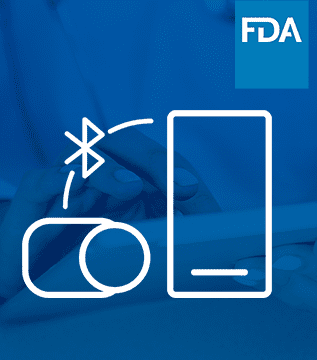
Article
Roundup: Bluetooth Medical Devices Cleared by FDA in 2024
This post was previously on the Pathfinder Software site. Pathfinder Software changed its name to Orthogonal in 2016. Read more.
This is part 2 of a series from guest blogger Joy McCaffrey of SpendRadar.
My last post focused on the “Who” of talking to customers. This post will focus on the “What.”
All conversations can fall into 4 categories:
1. Specific questions, with a specific goal in mind
2. Open-ended, exploratory questions
3. Meet and greet
4. Maintaining relationships
But what you talk to customers about depends on the type of customer that you’re talking to. To review how I classify customers, view the first post in this series. Let’s go through each type of customer and what you’ll be talking about.
Current Customers
There are so many reasons to talk to current customers, and you should take advantage of all of them. With current customers, you may be conducting surveys, or leading a focus group or running a customer advisory board, in which case you have specific questions prepared with a specific goal in mind. You may go into the conversation with no specific goal in mind. Open-ended questions can lead you to conversations and subjects that you would never have uncovered with set questions in hand. Depending on the number of customers you have and the time available, you should maintain relationships with as many customers as possible, in one form or another (be sure to read the future posts on When and Where.) References are always a goal.
New Customers
With New Customers, I use a version of Pragmatic Marketing’s Win/Loss Report, as well as the Net Promoter Score (NPS) question. I have a Word version and an Excel version of the report. I use the Word version in front of customers to take notes, or even if I’m on the phone, and the Excel version is a compilation of all the results. For Win/Loss Reports I have specific questions with a specific goal in mind. Basically, I’m trying to determine:
– What was their perception of the company and our products/services before the sale?
– What is their perception of the company and our products/services now that the sale is complete?
– How did they hear about us?
– What marketing tools did they use during the decision-making process and how effective were they?
– What was involved in the decision-making
– What other vendors were they considering and where are our strengths/weaknesses in comparison?
– How did our pricing compare to other vendors?
– What features/functions are most important?
– How likely is it that you would recommend our company to a friend or colleague?
Lost Customers
I use the same Win/Loss Report, minus the NPS question (How likely is it that you would recommend our company to a friend or colleague?). As you can see from the bullet points above, the same questions can be used, however, the answers may be dramatically different. Again, specific questions with a specific goal in mind.
Past Customers
I use a variation of the Win/Loss report. Why did you leave? Specifically, was it particular features or functions, customer service, or price that caused you to leave? What are you using now? What would it take to bring you back? With this last question I’m not trying to win them back – I’m not in sales. But I am interested in what, if anything, would bring them back. And if it turns out there is a possibility to win them back, I refer them to the sales rep.
Potential Customers
I mentioned in my last post that you do not want to interfere in the sales cycle. However, if at all possible, this can be a great avenue to ask open ended, exploratory questions about market trends, competitive information, their buying process, their pain points.
Non-Customers
Depending on who I’m talking to, I either use a variation of the win/loss report, or I ask open-ended questions. It depends on how comfortable and how open the person is. It also depends on how comfortable I am with speaking to that non-customer. I’m not generally an outgoing, extroverted person. I have no interest in sales in which case I would have to constantly reach out to people I don’t know. Talking to non-customers is challenging for me. In any other situation, the person has heard of the product or the company, so they recognize my role. With non-customers I have to reinforce that I’m not trying to sell them anything, that I’m just trying to learn about the market. A wise sales rep gave me a few pieces of advice. Never take rejection personally, and try to make a game out of it. Anything that will get you through.
As you can see, for the most part, I have specific questions in mind when I talk to customers. But don’t limit yourself to that. Find any reason available to reach out to your customers as often as possible.
Related Posts

Article
Roundup: Bluetooth Medical Devices Cleared by FDA in 2024

Article
Help Us Build an Authoritative List of SaMD Cleared by the FDA

Article
SaMD Cleared by the FDA: The Ultimate Running List

Article
Roundup: Bluetooth Medical Devices Cleared by FDA in 2023